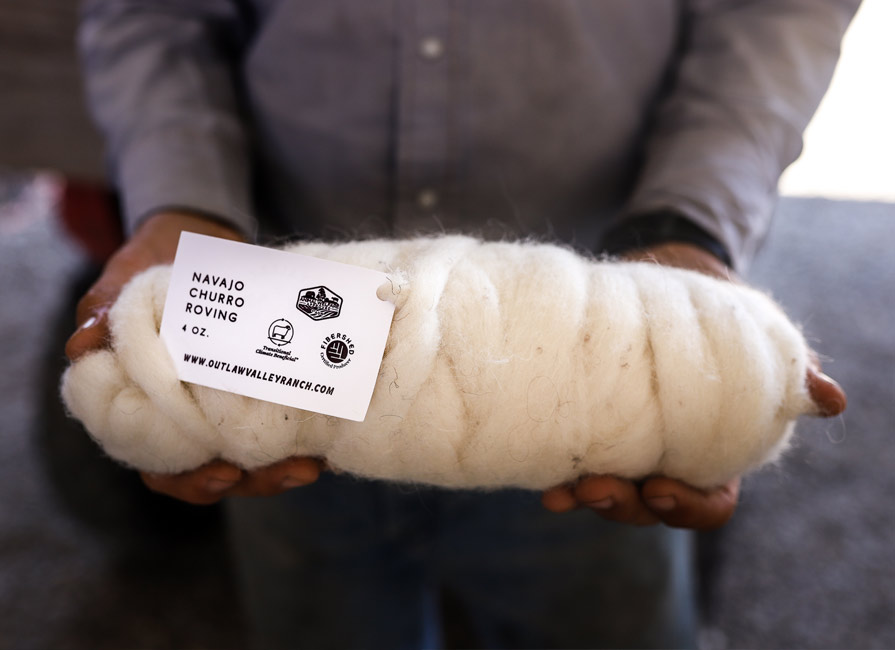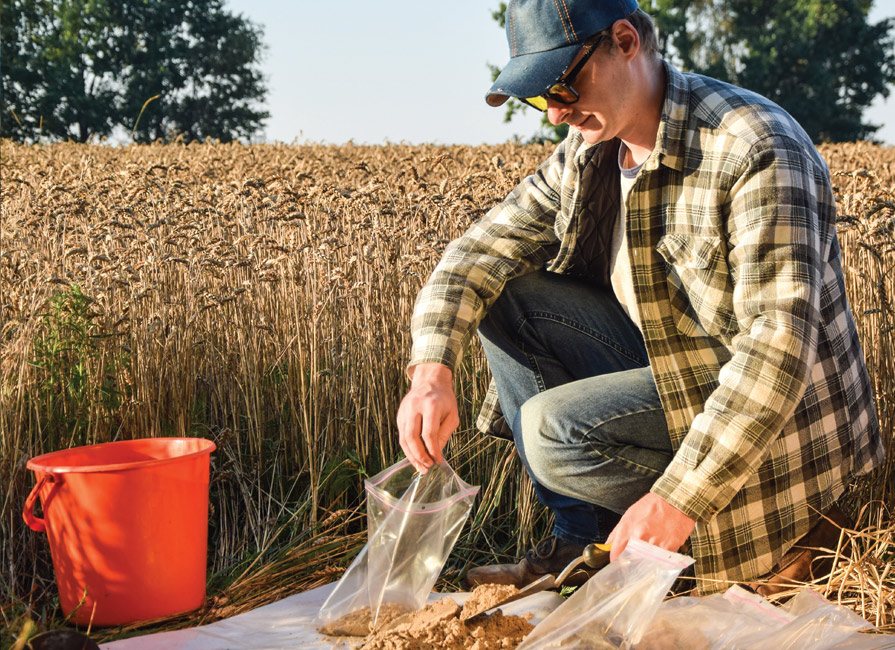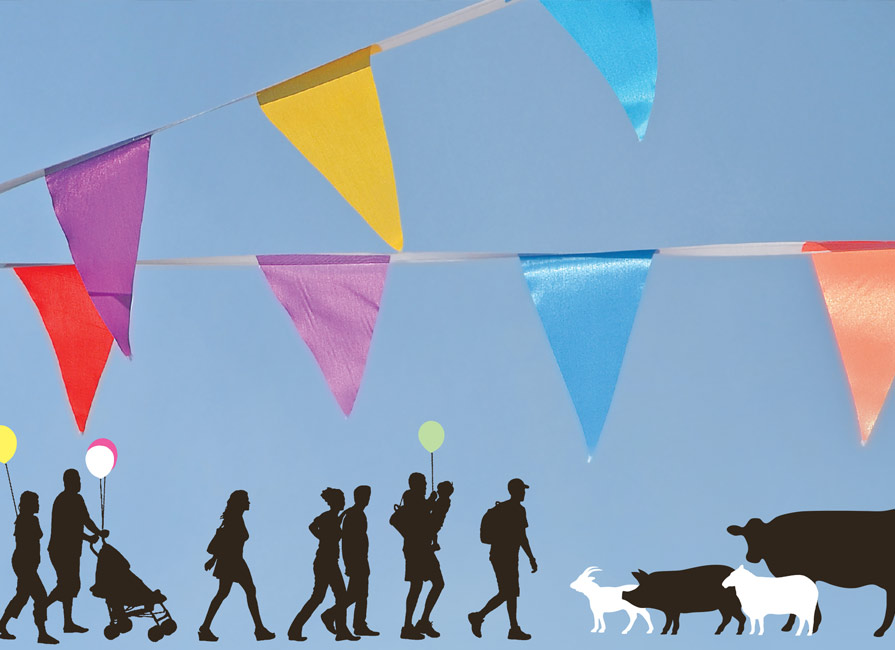Market research shows that today’s consumers are increasingly interested in knowing where their food comes…

Get Social
An online presence is now a necessity for most farming and food businesses. But it’s not just about having a website: Social media is a vital part of any communications and marketing strategy—particularly for those selling directly to the consumer.
Why social media?
A basic website will allow customers to easily find you online, but it has its limitations. Customers can visit your website, look at it and leave—and subsequently forget about you. Unless you spend a lot of time updating your website with new content or dynamic features, there’s no reason for anyone to keep coming back.
Social media is very different. Social media is an umbrella term for a number of online tools or platforms that allow people to stay in regular touch with each other and share information, like photographs, news or ideas. These platforms are far more dynamic and interactive than a basic website: they are (quite literally) like conversations.
Unlike basic websites, social media platforms allow businesses of all shapes and sizes to communicate directly and continuously with new and existing customers. Customers can choose to ‘follow’ your business, enabling you to provide them with interesting, up-to-date information about what you are doing or the products and services you offer, as well as reinforcing the values you share. What’s more, you can do this for free—at its most basic, the only cost is your time.
The most popular social media platforms include Facebook and Instagram, the focus of this article. But there are many more, such as Twitter and LinkedIn.
With 1.32 billion active global users, Facebook is the most widely used social platform—and by a large margin! If you’re just starting out, or only want to focus on one social media platform, choose Facebook.
Facebook provides your customers with a detailed, image-led profile of your business (with full contact details) and a ‘timeline’ to upload (or post) regular content that will inform, educate and entertain followers. You can easily create and upload content, such as where to buy your products or add farm photos, from a phone app, tablet or computer at any time. Facebook also offers the potential to create highly specific and localized advertisements to fit any budget.
Find out more: facebook.com/business/learn/set-up-facebook-page
Instagram is another very popular social media platform, designed specifically for sharing visual content. Photos of farm life scenes, animals and your products are ideal for this platform. Like Facebook, you can easily upload content using a smart phone, tablet or computer. Interestingly, Instagram users also tend to be younger than Facebook users. That can be a good thing, because many younger people are highly invested in seeking out sustainable products.
Find out more: help.instagram.com
What to post It sounds crazy, but almost everything you do on a day-to-day basis will be of interest to your customers. Customers don’t just want to buy your products: they want to learn about life on your farm; they want to feel part of it all.
Spend a few minutes listing the basic daily management tasks you do, as well as notable seasonal events like lambing or farrowing or letting cows out after winter. You’ll be amazed at the range of things you do! Posting photos of simple acts like feeding cattle, cutting and loading hay, cleaning and packing eggs, fixing the tractor or even updating farm records for your upcoming audit (!) will prove fascinating, while shots of your family or team will bring a human element to your social media pages. Remember to briefly explain what’s going on in the photos to inspire, educate and inform—and encourage conversation.
What makes your farm stand out among others? Customers want to know why supporting you is better for the environment, for animals and for their health. So regularly highlight your high-welfare, sustainable farming practices and promote your AGW certification. You don’t have to put down other farms to be proud of what you do. Explain why AGW certification matters and what’s involved. Make sure your AGW logos are displayed prominently on products and social media pages.
Finally, you want social media to help sell your products, but don’t overdo it. Remind people once a week where they can buy your products, dates of upcoming farmers’ markets or any special offers and so on. Promote and ‘tag’ stores that stock your products on social media—and make sure you follow their social media pages, too.
Create your narrative
Social media is also about setting a ‘narrative’ for your business and building a sense of community among followers. Sharing information from other (credible) sources will help reinforce the values you and your customers share. Take time out to look at Facebook posts from other farms, businesses and organizations, such as A Greener World, and share their posts—they will usually reciprocate.
Look out for interesting news articles that support what you are doing, such as positive media about the benefits of pasture-based farming. However, try to avoid purveyors of ‘fake’ news. Reports that make sensationalist or unsubstantiated claims are best avoided, as they may undermine your credibility among customers. Similarly, you should consider setting up separate personal and farm social media accounts to avoid potential problems.
As often happens with new technology, ethical and regulatory frameworks have struggled to incorporate social media. Free services typically monetize their product by selling ads and/or personal data, so it’s a good idea to familiarize yourself with privacy and advertising policies.
Best practice
Be consistent: Post at least 3–4 times a week. Check for customer interactions at least twice a day—and reply.
Positive image: Use high quality photos or videos. Modern camera phones are all you need to take a good photo. Include a brief explanation, where appropriate.
Vary content: Posts with a visual component get more engagement. But you can also share interesting articles or reports that highlight and support your values. Don’t oversell: Limit hard sales to ¼ of posts. Focus on education, conversation and engagement. Sales will follow.
Be committed
Social media is about commitment. Unless you make the commitment to maintain your social media platform(s), you won’t see results —and you could end up doing more harm than good. Commitment means adding “Find us on Facebook” and social media links to your website, business cards, signage at the farmers’ market and any communications you send out (email or mail).
It also means posting to your social media pages consistently. As a minimum, aim for 3-4 posts a week. Pick a responsible person or learn to do it yourself, set a schedule and then stick to it. Start by agreeing on three days a week when you’ll post content at a set time, such as a photo or an update about what’s going on at the farm. In addition, set aside a minimum of 20 minutes a day (split up throughout the day) to check in and respond to your audience. It sounds like a lot, but it will soon become a habit. In time, you will learn from people’s comments what kind of posts and times work best. Remember, social media is about communicating: Neglect your social media pages or ignore your customer’s comments and questions at your peril!
Help promote A Greener World and we’ll promote you! Be sure to tag us with @AGreenerWorld on Facebook, @AGreenerWorld on Twitter and #AGreenerWorld or @agreenerworldorg on Instagram. Use the hashtags #AnimalWelfareApprovedbyAGW, #GrassfedbyAGW or #NonGMObyAGW to talk about our labels and be sure to share our posts and encourage your friends and family to find us online too!
Author Stephanie Vanlochem is a content developer with an education in marketing and new media. Find @cookbycolor on FB/Instagram



